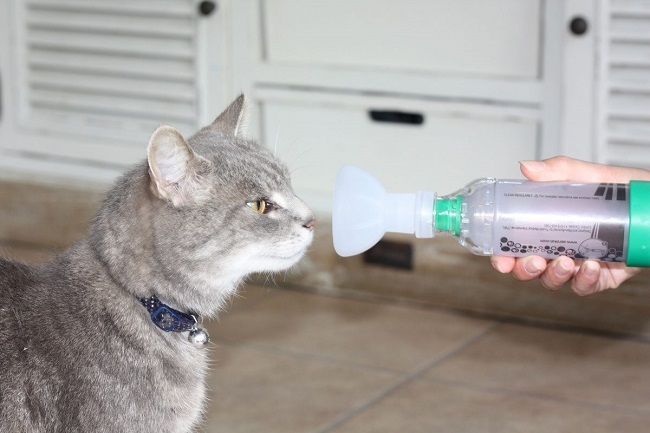
Feline asthma, also known as feline allergic bronchitis or bronchial asthma, is a common respiratory condition in cats that can cause significant discomfort and breathing difficulties. Like human asthma, this chronic inflammatory disease affects the airways of cats, leading to constriction and inflammation. Early recognition and appropriate treatment are crucial in managing feline asthma and improving the quality of life for affected feline companions.
Symptoms of Feline Asthma
Frequent Coughing
Cats with asthma may experience bouts of coughing, often accompanied by a dry and hacking sound. The coughing may be intermittent or persistent.
Labored or Rapid Breathing
Rapid or shallow breathing, with an increased respiratory rate, and wheezing sounds can indicate respiratory distress.
Exercise Intolerance
Cats with asthma may show reduced tolerance for physical activity due to breathing difficulties.
Gagging or Retching
Some cats may exhibit gagging or retching, which can be mistaken for hairball-related issues.
Lethargy and Reduced Appetite
Feline asthma can cause general fatigue, reduced energy levels, and a decrease in appetite.
Diagnostic Process
Veterinary Examination
A thorough physical examination by a veterinarian is essential to evaluate respiratory sounds, lung function, and overall health.
X-rays and Bronchoscopy
These diagnostic tools may be used to visualize the airways and confirm the presence of inflammation or bronchial constriction.
Laboratory Tests
Blood tests and other diagnostic procedures may be conducted to rule out other potential causes and assess overall health.
Treatment Options
Veterinary Consultation
If you suspect your cat has asthma, consult a veterinarian for an accurate diagnosis and appropriate treatment plan. Provide a detailed medical history and share observations of your cat’s symptoms to assist the veterinarian in making an accurate diagnosis.
Medications
Bronchodilators
These medications help relax the airway muscles and improve breathing. They are usually administered through inhalers or nebulizers.
Corticosteroids
These anti-inflammatory medications help reduce airway inflammation and manage asthma symptoms. They may be administered orally, through inhalers, or injections.
Supportive Therapies
In some cases, additional medications, such as antihistamines or antibiotics, may be prescribed to manage concurrent allergies or secondary infections.
Environmental Management
Minimize exposure to Triggers
Identify and reduce exposure to potential triggers like dust, pollen, smoke, or strong odors that may exacerbate asthma symptoms.
Clean Environment
Regularly clean and vacuum the living areas to minimize dust and allergens. Consider using air purifiers or filters to improve air quality.
Stress Reduction
Stress can worsen asthma symptoms in cats. Provide a calm and stress-free environment for your feline companion by maintaining a consistent routine and offering enriching activities.
Conclusion
Identifying feline asthma and implementing appropriate treatment strategies are crucial in managing this chronic respiratory condition. By promptly recognizing symptoms, seeking veterinary consultation, and adhering to prescribed treatment plans, cat owners can significantly improve the quality of life for their feline companions. Read this article by the Cornell University Feline Health Center for more detailed information on feline asthma.
Related Articles & Free Email Newsletter Sign Up
Calico Cats Offer a Unique Coat Pattern and Can Bring Good Luck
How to Identify and Treat Painful Bladder Syndrome in Pet Cats


Comment here